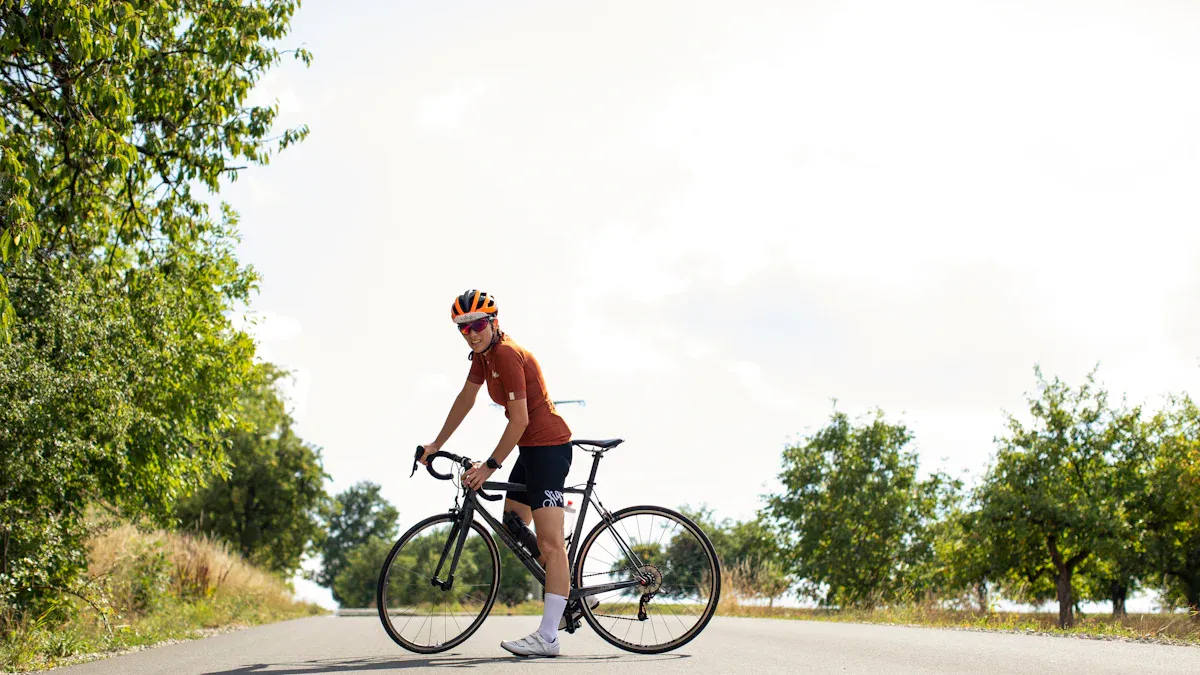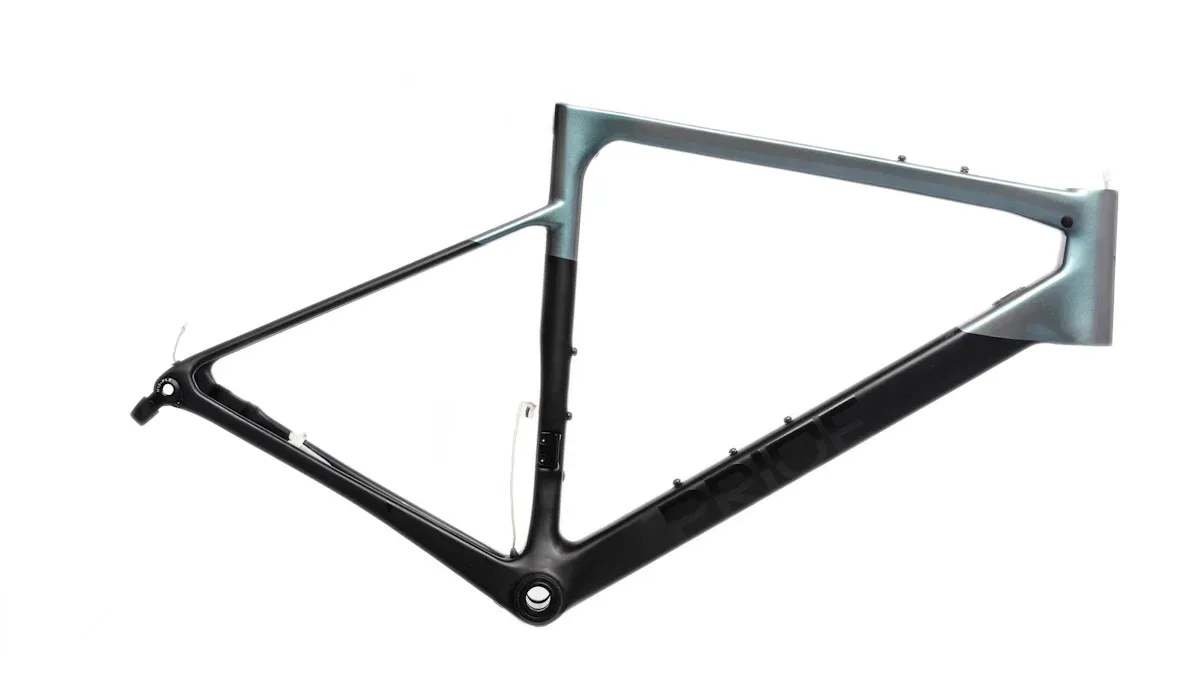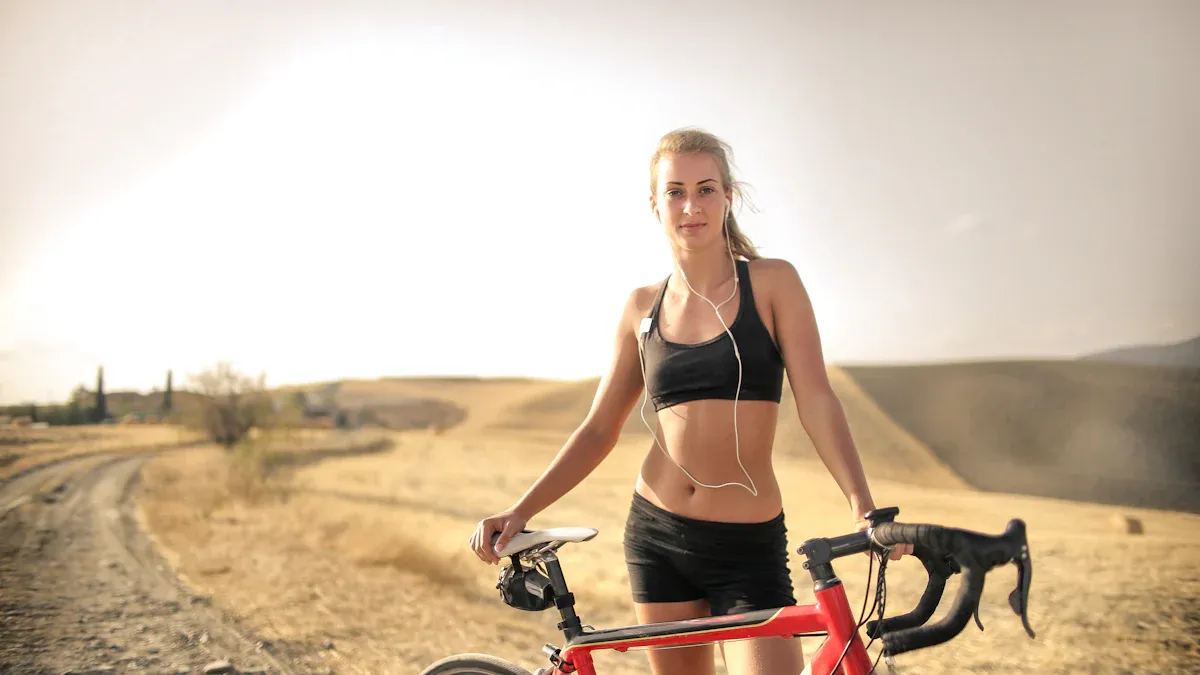
Finding the right bike frame size is very important, especially when it comes to fit bike frames. It helps you feel comfortable and perform better on the road or trail. When you pick a frame that fits well, you will have better aerodynamics. You will also get efficient power transfer and good leg extension. These things can really affect your speed and how long you can ride. Before you buy a bike, measure your height and inseam. This will help you understand bike fitting basics and assist you in finding fit bike frames that match your riding style.
Key Takeaways
Picking the right bike frame size makes riding more comfortable and helps you ride better. It also lowers the chance of getting hurt.
You need to measure your height and inseam to find the right bike size.
Knowing size labels and using size charts can make bike shopping easier.
Having the right standover height keeps you safe and comfortable. It helps you control the bike better while riding.
Think about getting a professional bike fitting for custom changes that make your ride better.
Fit Bike Frames

Choosing the right bike frame size is very important. It helps you feel comfortable and ride better. A bike that fits well lets you ride longer and more efficiently. If your frame is too big or too small, you might feel pain or get hurt. Let’s look at how to measure your height and inseam. We will also learn about size labels to find the best fit bike frames for you.
Measuring Height and Inseam
To start, you need to measure your height and inseam correctly. Here are two easy ways to do this:
Method | Description |
|---|---|
Standard Book | Stand barefoot against a wall. Use a hardback book to mark your inseam height. |
Jig Method | A jig with a horizontal beam measures inseam. This can give a more accurate reading. |
When you measure your inseam, wear the shoes you usually bike in. This gives you a better measurement. After you have these numbers, check a bike size chart to find the right frame size.
Understanding Size Designations
Bike sizes can be tricky. Different brands and bike types use different size systems. Here’s a quick look at how bike types show their sizes:
Bike Type | Sizing Convention | Key Differences |
|---|---|---|
Kids Bikes | Sized by wheel size because of small frames. | Sizes change a lot based on wheel size, not frame size. |
Folding Bikes | Usually have a ‘one size fits all’ rule with universal sizing. | No specific sizes; wheel sizes don’t change user height. |
BMX Bikes | Measured by the top tube size, which connects the head tube to the seat tube. | Sizing is based on a part of the frame, not overall height. |
Knowing these sizes helps you shop for bikes better. Remember, a bike that feels good for one person may not fit another.
Choosing the right frame size is very important. A frame that is too small can hurt your knees when pedaling. A frame that is too big can make it hard to stop safely.
Online bike size calculators can help, but they may not be as accurate as getting fitted in person. As one cyclist said, “An online fit system is a good start, but you need expert help for the best fit.” This shows how important it is to get professional help if you are unsure about your measurements.
By measuring your height and inseam and learning about size labels, you will be ready to find the perfect fit bike frames for your riding style.
Standover Height Matters

When it comes to bike fitting, standover height is crucial. It refers to the distance from the ground to the top of the bike’s top tube. You measure this height when you stand over the bike, and it plays a significant role in your comfort and safety while riding. A proper standover height ensures you have enough clearance to mount and dismount easily, which can prevent accidents and injuries.
How to Measure Standover Height
Measuring your standover height is simple. Here’s how you can do it accurately:
Stand with your riding shoes on.
Straddle a large hardcover book. This simulates the bike’s top tube.
Measure the height from the floor to the top of the book. Aim for at least 1 inch of clearance.
Compare your measurement with bike frame specifications. You want to ensure you have at least 1-2 inches of clearance for comfort.
Tip: Always measure twice to confirm accuracy. Having a partner can help make this process easier.
Ensuring Proper Fit
Getting the standover height right means more control and comfort while riding. Here are some benefits of having the correct standover height:
It ensures 1 to 2 inches of clearance, preventing painful contact during emergency stops.
Adequate clearance allows for better balance and control, reducing the risk of falls.
A proper standover height supports a relaxed riding posture, preventing strain on your knees and lower back.
On the flip side, if your standover height is too high, it complicates mounting and dismounting, increasing the risk of accidents. Riding a bike that’s too tall can lead to discomfort and potential long-term issues for your knees and lower back. So, take the time to measure your standover height accurately. It’s a small step that can make a big difference in your riding experience.
Choose the Right Size Bike for Your Body Type
Finding the right size bike is important. Your body type matters a lot. Different riders have different shapes. Knowing your shape helps you pick a bike that fits well and makes riding fun. Let’s look at how to fit bikes for women and kids. We will also talk about arm length and riding style.
Fitting for Women
Women usually have different body shapes than men. This can change how a bike fits. Here are some main differences in bike design for women:
Feature | Men’s Bikes | Women’s Bikes |
|---|---|---|
Frame Geometry | Longer top tube for a stretched riding position | Shorter top tube for a more upright position |
Saddle Width | Narrower to match sit bone spacing | Wider for proper support and weight distribution |
Seat Post Length | Longer to fit different riding positions | Shorter for a more upright riding position |
Crankset Length | Longer crank arms for more leverage | Shorter crank arms to suit anatomical needs |
Q-factor | Wider to fit broader hips | Narrower for natural leg alignment |
Overall Design | Made for longer torsos and arms | Made for shorter torsos and arms |
These changes help women ride comfortably and efficiently. If you’re a woman picking a bike, notice these features. A good fit lets you ride longer without pain.
Fitting for Children
When fitting bikes for kids, height is the best measure. Age can help, but height gives a better fit. Here’s a quick guide for bike sizes based on inseam and age:
Bike Size | Inseam (inches) | Age Range |
|---|---|---|
12″ | 14-17 | 1-4 |
14″ | 16-20 | 3-5 |
16″ | 18-22 | 4-6 |
18″ | 20-24 | 5-9 |
20″ | 22-25 | 7-13 |
24″ | 24-28 | 10-15 |
Tip: Always check your child’s inseam before buying a bike. Kids grow fast, and a bike that fits now may not fit later.
When picking a bike for a child, think about their riding style. A bike that’s too small can cause discomfort and health issues, like back pain. A bike that’s too big can make it hard for them to control.
The Role of Arm Length and Riding Style
Your arm length and riding style also matter when choosing a bike frame. Body shapes like arm length and torso length affect bike choice. Here’s how:
Cyclists with long legs and short torsos may need a smaller frame. This is because the handlebars are closer.
Those with short legs and long torsos may need a larger frame for better reach.
Also, your riding style is important. For example:
Smaller frames are better for racing because they are quick and responsive.
Larger frames are good for commuting and touring to make riding more comfortable.
Make sure the handlebars are at a good height compared to the seat. A frame that’s too big may stretch you out too much. A frame that’s too small can make you feel cramped.
By knowing these things, you can choose the right size bike for your body type and riding style. This will help you feel more comfortable and enjoy cycling even more.
Properly Size and Fit a Bike
Finding the right bike frame is just the start. After you get your bike, you may need to make some changes for a comfy ride. Here are some important changes you can make:
Adjustments for Comfort
Saddle Selection: Pick a saddle that fits your body. Look for one that matches your shape and width. If you are not very flexible, a saddle with more curve might be better for you.
Saddle Setback: Place your saddle so your knee is right over the pedal when the crank is at the 3 o’clock position. This helps you pedal better and keeps your knees safe.
Saddle Height: Start with the saddle level. Change it based on how your heel touches the pedal while pedaling. Your leg should almost be fully straight at the bottom of the pedal stroke.
Pedal Adjustments: Make sure your cleats are set right. This keeps your shoes and pedals connected well, which helps avoid injuries and improves your power.
Handlebar Fit: Choose handlebars that match your shoulder width. The reach should feel good to avoid neck and shoulder pain.
Adjusting saddle height and handlebar position is very important for comfort and good riding angles. For example, handlebar height can change how your shoulders feel. Ideally, this angle should be less than 90 degrees for some bike types. If you race, you might want your handlebars lower than your saddle. Non-racers often like them at the same height or even higher. These changes are key for staying comfy and performing well during your rides.
Seeking Professional Help
While you can make many changes yourself, professional bike fitting services can help improve your riding experience. Here’s a quick look at what you can gain from a professional fitting:
Benefit | Description |
|---|---|
Changes to saddle, handlebars, and cleats improve your riding position, especially for long rides. | |
Injury prevention | Proper alignment reduces stress on joints, helping to prevent overuse injuries like knee and back pain. |
Saddle sore prevention | Correct saddle positioning helps spread weight evenly, lowering the risk of saddle sores. |
Improved pedaling efficiency | Optimizes your bike setup and pedaling style, allowing for more power with less effort. |
Increased power output | Fine-tuning your position boosts aerodynamics and muscle use, improving performance. |
Reduced fatigue | A proper fit ensures efficient energy use, allowing for longer rides with less strain. |
Professional fitters use advanced tools like motion capture and pressure mapping to check your riding style. They think about your riding goals and injury history for personal adjustments. This level of detail is hard to get with DIY fittings, which often use basic tools and measurements.
If you care about cycling, getting a professional bike fitting can make a big difference. It’s worth thinking about, especially if you plan to ride long distances or want to get better.

Finding the right size for your bike frame is very important. It helps you have a comfortable and fun ride. Here are some important points to remember:
The right bike size makes riding more comfortable and helps avoid injuries.
You need to measure your height and inseam correctly to choose the right bike.
Size charts can help you find the best fit for you.
Taking time to make sure your bike fits well can help your health in the long run. A bike that fits right reduces pain and strain, stops injuries, and improves how well you ride. If you are not sure about your fit, think about getting expert help. It can really change your cycling experience! 🚴♂️
FAQ
What size bike frame should I choose?
Choosing the right size bike frame depends on your height and inseam measurements. Use a bike size chart to match your measurements with the appropriate frame size. Always test ride if possible!
How do I know if my bike fits properly?
You can check your bike fit by ensuring you have 1-2 inches of standover clearance. Your knees should align over the pedals, and your arms should comfortably reach the handlebars.
Can I adjust my bike after purchase?
Yes! You can adjust the saddle height, saddle position, and handlebar height for better comfort. Small tweaks can significantly improve your riding experience.
Should I get a professional bike fitting?
If you plan to ride often or for long distances, a professional fitting can help. They can optimize your bike setup for comfort and performance, reducing injury risk.
What if I’m between sizes?
If you find yourself between sizes, consider your riding style. A smaller frame offers better control, while a larger frame provides comfort. Test both sizes to see which feels best for you!
See Also
Finding The Perfect Bike Frame Fit For Your Needs
Use A Bike Frame Size Calculator To Find Your Fit
Measuring A Bike Frame For Optimal Riding Comfort
